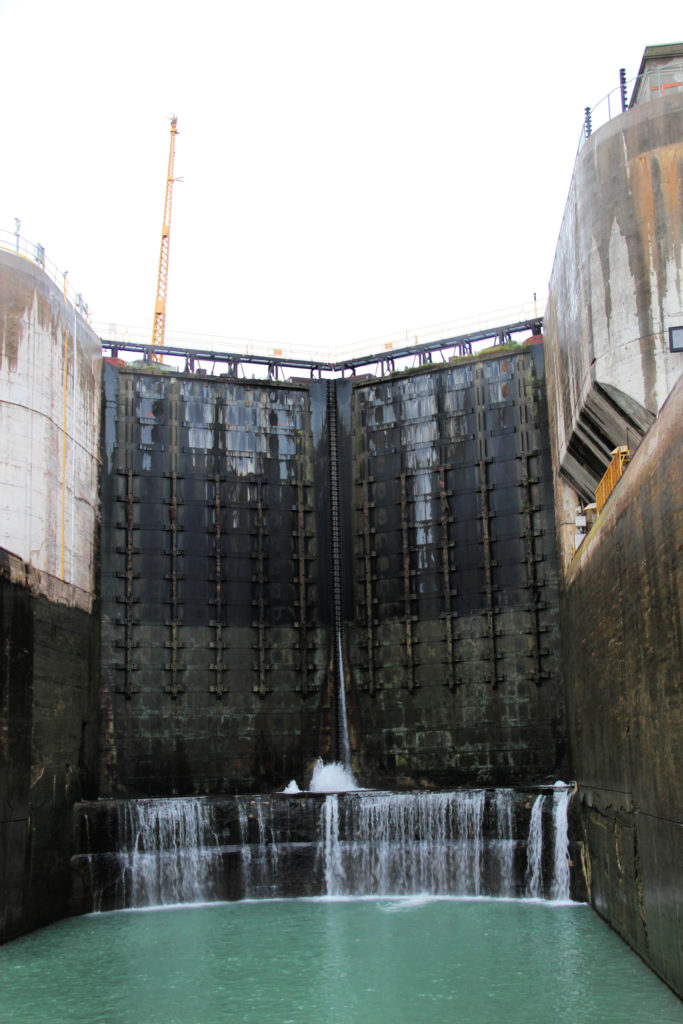The Welland Canal
After leaving Detroit, we sailed from Lake Huron to the Detroit River and then entered Lake Erie. We spent the afternoon and night sailing up Lake Erie. It was carved by glacier ice. Of the five Great Lakes, Lake Erie is the fourth largest by surface area but the shallowest and smallest by volume. Lake Erie’s northern boundary lies in Ontario while the rest of it is bound by the states of Michigan, Ohio, Pennsylvania and New York. The picture below is of a lighthouse along the shore of Lake Erie.

At the northern end of Lake Erie, we entered the Welland Canal at Port Colborne, Canada. The canal enables ships to bypass the Niagara Escarpment by traveling between Lake Erie and Lake Ontario while avoiding Niagara Falls. It replaces three earlier canals each of which were also named the Welland Canal. About 3,000 ships pass through the Canal each year, carrying a total of 40,000 tons of cargo. The Garden City Skyway passes over the Welland Canal so ships can’t be more than 116 feet tall in order to pass under the Skyway. All other highway and railroad crossings are moveable. The Welland Canal is a major part of the St. Lawrence Seaway. The pictures below are of Port Colborne and of our ship entering the Welland Canal. You can see one of the vertical lift bridges in the distance and then again when we were about to go under the bridge.

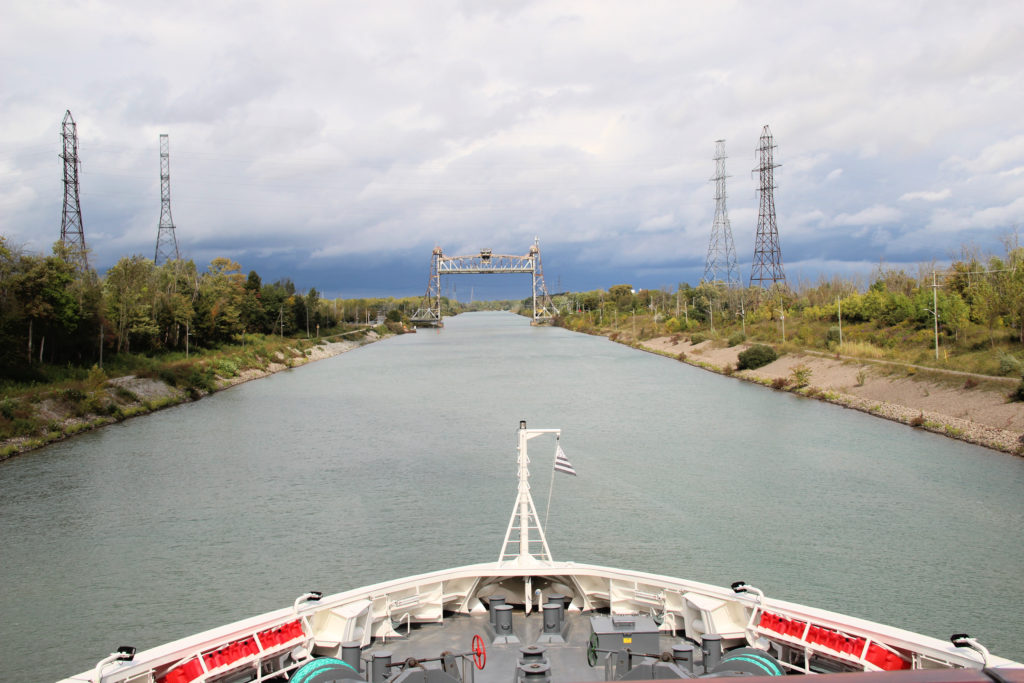
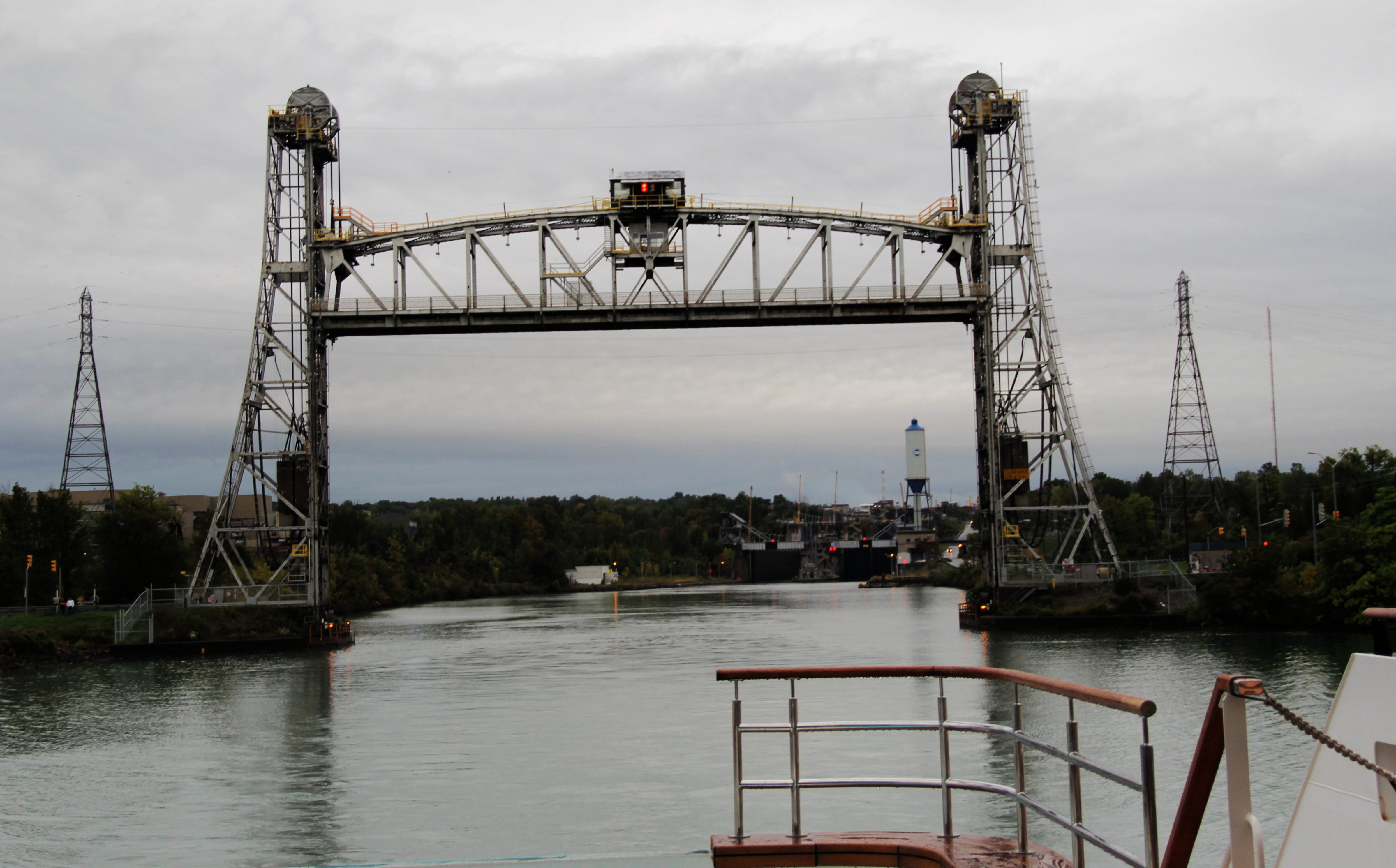
Construction for this canal began in 1913, but was delayed because of World War I. It officially opened in 1932. The canal is 27 miles long, a little more than 25 feet deep and consists of eight locks. Its primary purpose is to enable commercial cargo vessels to navigate between Lake Erie and Lake Ontario. This means that pleasure crafts, as ours was considered, do not have priority and must often wait for commercial vessels to move through the lock system. In the pictures below, the Baie Comeau is passing our ship which is moored to the side of the canal. In the next picture, the Lubie, also a commercial cargo ship, is entering a lock.
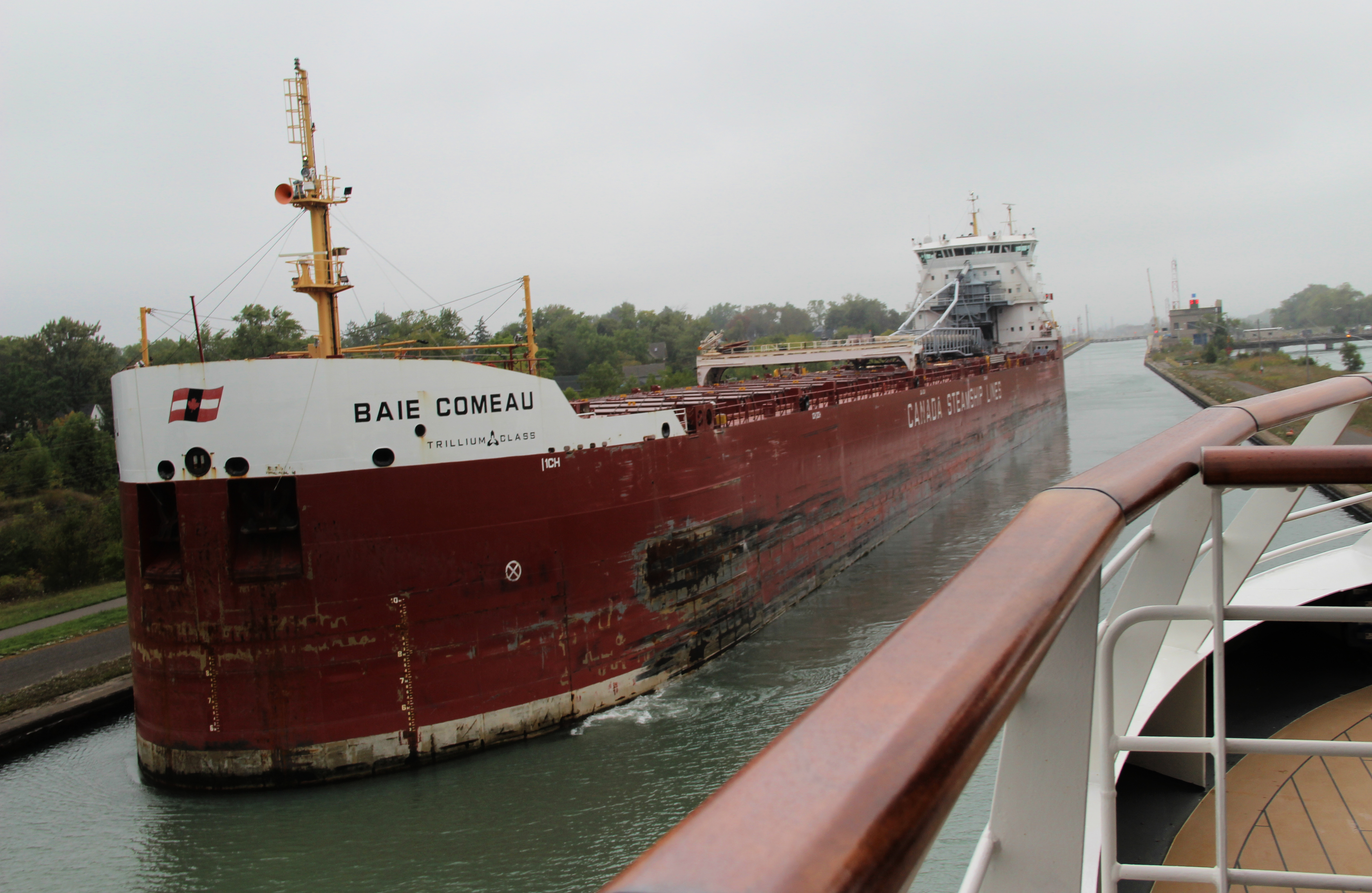
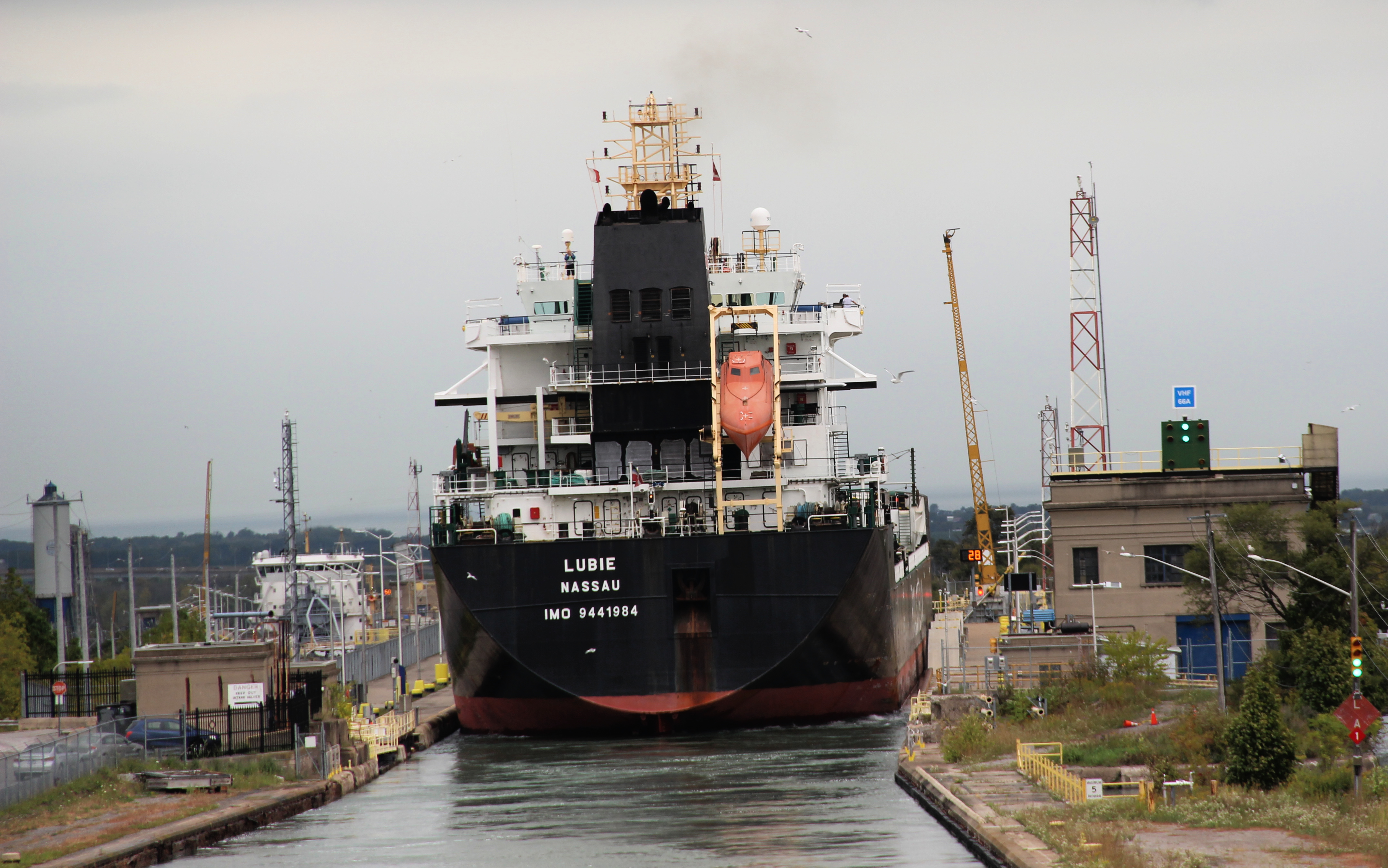
It was finally our turn to make our way through the locks. A pilot had boarded our ship to assist the captain with the tight maneuvers. The first lock we entered was Lock 8 which is a guard lock, lowering us only about four feet as we entered the Welland Canal. The seven remaining locks are at the northern end of the Canal and would each lower the water level about 45 feet. After passing through all of the locks, we would be 326.5 feet lower than when we had started. The entire transit time was about 11 hours.
Ships move under their own power during their entire transit of the Welland Canal and its locks. Once a vessel has been securely moored in the lock chamber by a crew of Seaway linehandlers, the huge steel lock gates close behind it and valves are put into operation to fill or empty the lock by gravity flow. About 91 million litres (20 million gallons) of water are required for each lock transit.
https://greatlakes-seaway.com/wp-content/uploads/2019/10/welland.pdf

